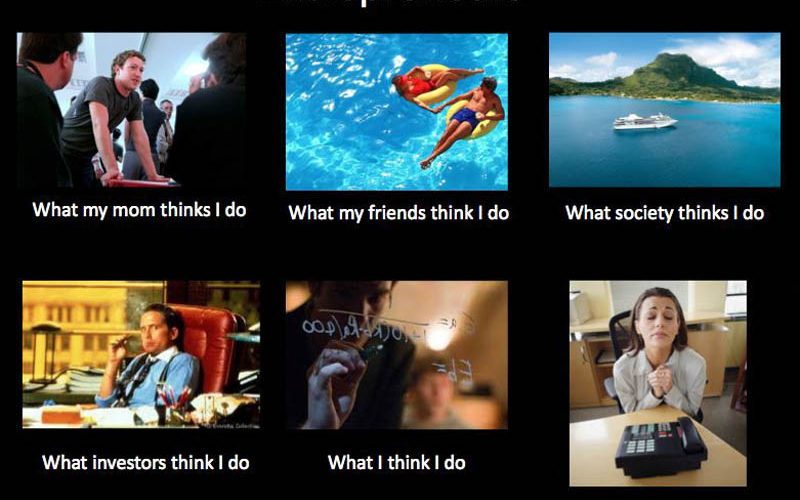Value: the most common word an MBA student hears. Value, added value, created value, future value, present value, value chain, estimated value, assumed value, depreciated value, valuation… the list feels never ending. My favorite learned value though, is what is known as Shared Value. Not to be confused with not-for-profit, shared value means the value created is mutually beneficial for the business and for some social or environmental cause. There are social enterprises, as well as social businesses that engage in shared value practices.
As part of my Sofaer International MBA program at Tel Aviv University’s Recanati School of Business, I was lucky enough to participate in an intensive, hands-on learning experience called MBA Cares. In this interactive course and research project, I was one of three team members (we were a Jew, a Christian, and a Muslim working together harmoniously, by the way) building the foundation upon which a local shared-space environment  for start-ups would expand and create a business accelerator. This project took us almost the entire year to complete, and had we had more time, we surely would have continued. In Tel Aviv, the start-up and high-tech scenes are very active and engaging, and the work we did was quite enjoyable as a result of that Tel Aviv environment. Some of the most interesting parts of the report have to do with what exactly goes into creating a business accelerator, but since the work we did was much like that of a consultant, our findings must remain confidential.
On the other hand, I can share a few general concepts that interest me most.
Typical enterprises exist for one general bottom line: economic. Other enterprises see the worth in a shared value system, and employ these beliefs in a Double Impact Venture; meaning, they have social and business goals, and their impact is for the good cause they believe in, as well as their own economic existence. Because of these types of ventures that add to a functioning society, a number of benefits exist: 1) entrepreneurs and start-ups can flourish and be possible, 2) more people in society are enabled to give as opposed to receive, 3) social problems can be solved more effectively, and 4) social capital is created. From what I have seen, learned and experienced, not-for-profits tend to lack in two major areas: 1) the ability to understand and perform the business operations needed to sustainably succeed; and 2) by being not-for-profit, by definition, they are not giving as much as they could if they were for-profit. Meaning, the more you have, the more you have to give. It is important to differentiate between the two types of organizations (for/not for profits) because they are fundamentally different. A Double Impact Venture wants to see positive change in their community, but realizes that the best method for achieving that goal is to also maximize profitability. This can only be accomplished through identifying and addressing a social issue, having a sustainable revenue stream, and targeting the social issue as part of the core of the business itself.
There are strong arguments against these types of structures, and I fully recognize and even appreciate them. Milton Friedman in 1970 made a strong point, in which he said that engaging in anything other than what will bring revenue to the company, by definition, is detrimental to the company and it’s shareholders, in which case the company is not fulfilling its one and only purpose and responsibility – to maximize profit. That has a great weight of truth, and I respect it highly. There are also many problems with measuring SROI: a social return on investment. That being said, I also fully believe that companies engaging in Corporate Social Responsibility, when its value is shared socially and economically, are being even more responsible and increasing their profitability and likability (Jason Saul also articulated this). If for nothing other than good PR, there is reason to be socially aware and involved. On the other hand, companies who engage in “green-washing” or “pink-washing” are not doing the right thing at all, but unfortunately, most people aren’t intelligent enough to know or care. Michael Porter and Mark Kramer are both highly respected individuals who believe in this concept, its viability, its sustainability, and its “power to unleash the next wave of global growth” (From Big Idea: Creating Shared Value, 2011, Harvard Business Review) giving these types of firms a competitive advantage over others.
Double Impact Ventures are impressive and important, but often times entrepreneurs in early stages of start-up development need to be part of a business accelerator or incubator. A business accelerator provides tools and resources so that it may accelerate the business into and through growth stages of the business life-cycle. Often times, founders look a little like this. There are many domains of a business accelerator or incubator. One aspect, the investor involvement, is most worthy of discussion. In our case, we discovered that the most relevant investors for Double Impact Ventures would be Angel Investors. (A few months after completing this project, by the way, I ended up organizing an event called “Ask an Angel” in which a group of about 80 entrepreneurs asked questions to a panel of 6 Angel investors. Great success and tons of fun- more on that in another post). Often times, incubators or accelerators have some sort of Demo Day, where entrepreneurs and start-ups present their ventures to investors. A great incubator prepares entrepreneurs for this event by creating value for them in a number of ways (professional, personal, team-building, and more).
I could go on an on, but I have to get back to my real job now (which just so happens to be the coolest job ever – Behavioral Economics research and implementation). I hope you’ve enjoyed this small piece of what was much of my life last year, and as always, tizremu!Â
A song about starting-up…”You make a grown man cryyyy”
- Who Gets To Go To The Moon - 9/18/2018
- On Being Feminine, Not Feminist - 3/8/2016
- Top 7 Ways To Know You’re Not Ready To Date - 11/5/2015





